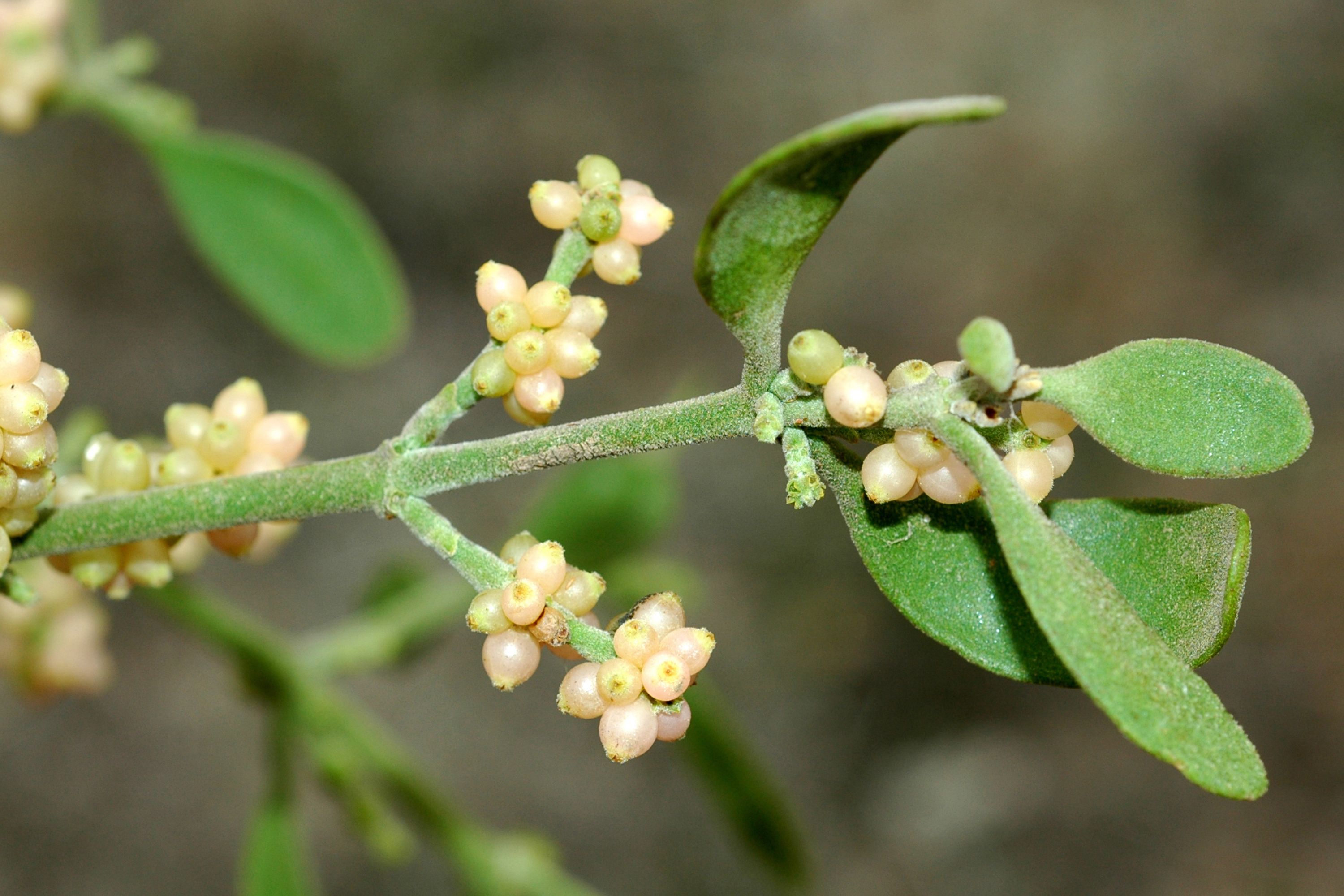American mistletoe
(Phoradendron leucarpum)

Description
Phoradendron leucarpum, commonly known as Eastern mistletoe, is a parasitic plant that grows on a wide range of trees and shrubs in the eastern United States, from New Jersey to Florida and west to Texas. It is a member of the Santalaceae family, which includes other parasitic plants like the sandalwood tree. In this encyclopedia-style article, we will explore the physical characteristics, habitat, life cycle, and uses of Phoradendron leucarpum. Physical Characteristics: Phoradendron leucarpum has thick, leathery leaves that are 1 to 2 inches long and half an inch wide. The leaves are a yellow-green color and are arranged in pairs along the stem. The stems of the plant are brown and woody, and can grow up to several feet in length. The plant produces small, white flowers that bloom in the late winter and early spring, and its fruits are small, white berries that ripen in the fall. Habitat: Phoradendron leucarpum is found throughout the eastern United States, from New Jersey to Florida and west to Texas. It prefers to grow in the branches of deciduous trees such as oak, hickory, maple, and elm, but can also grow on conifers like pine and cedar. The plant is a hemiparasite, meaning that while it does obtain some of its nutrients from the host tree, it also carries out photosynthesis and produces its own food through its leaves. Life Cycle: Phoradendron leucarpum is dioecious, meaning that individual plants are either male or female. The flowers of the plant are pollinated by insects, and the berries that result from fertilization contain sticky seeds that are dispersed by birds. When a bird eats the berry, the sticky seed adheres to the bird's beak or digestive tract, allowing it to be carried to a new tree where it can germinate and begin to grow. The plant's roots penetrate the host tree's bark and make contact with its vascular system, allowing the mistletoe to obtain water and nutrients. The mistletoe's growth can eventually weaken the host tree and make it more susceptible to disease and other stressors. Uses: Phoradendron leucarpum has a long history of use in traditional medicine by Native American tribes, who used it to treat a variety of ailments including menstrual cramps, infertility, and high blood pressure. The plant contains a number of bioactive compounds, including viscotoxins and lectins, which have been shown to have antitumor and immunomodulatory effects. In addition to its medicinal uses, Phoradendron leucarpum is also used as a holiday decoration. The plant's white berries and evergreen foliage make it a popular choice for Christmas wreaths and other decorations. Conclusion: Phoradendron leucarpum is a fascinating plant with a unique life cycle and a long history of use in traditional medicine. While it can be harmful to its host tree, it also plays an important role in many ecosystems by providing food and shelter for a variety of birds and insects. As our understanding of the plant's medicinal properties continues to grow, it may become an important source of new drugs and therapies for a variety of diseases.
Taxonomic tree:







